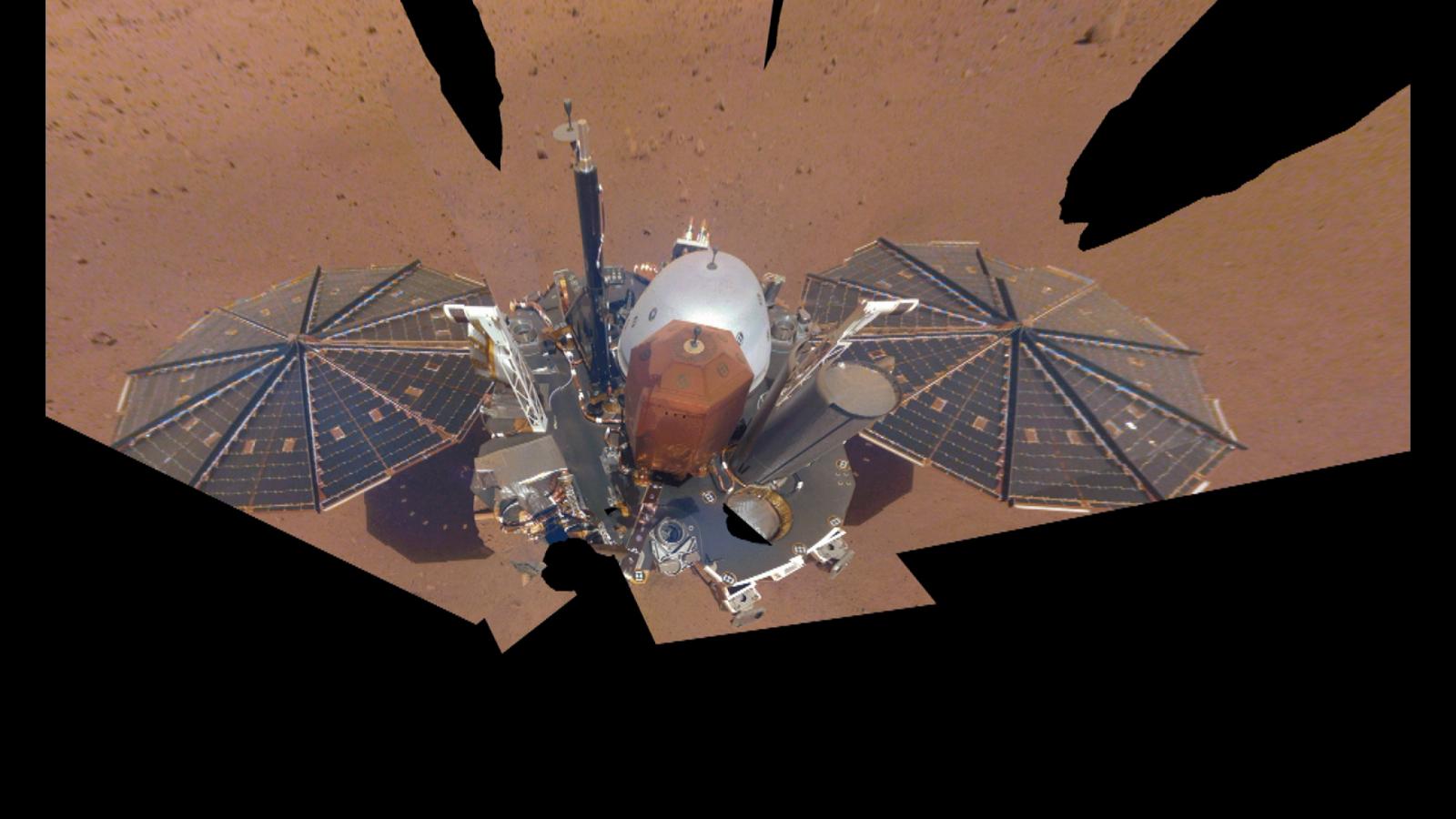(CNN) – This is the last time we see a selfie of NASA’s Insight lander on Mars. And based on the amount of dust covering the solar panels, it’s easy to see why.
The stationary spacecraft captured the image on April 24 with its robotic arm, which will be placed in a final resting position called a “retreat position” this month. To take a selfie, the arm would have to move several times, and that wouldn’t be possible anymore.
“Before I lost any more solar energy, I took a while to record my surroundings and took my last selfie before resting my arm permanently with the camera in saved mode,” chirp InSight account on Tuesday.
Due to low energy supplies, the mission will halt science operations in late summer. Since its landing in November 2018, it’s been revealing the mysterious interior of Mars.
InSight’s solar panels are becoming increasingly covered in red Martian dust, despite the mission team’s creative efforts on Earth. This buildup will only get worse as Mars enters winter, when more dust rises into the atmosphere.
These floating particles reduce sunlight needed to charge the solar panels that power InSight, which is currently on an extended mission expected to run through December. The mission achieved its main goals after its first two years on the surface of Mars.

InSight’s second full selfie, made up of multiple images taken in March and April 2019, shows dust accumulating on solar panels.
The latest selfie shows the lander covered in much more dust than previous selfies from December 2018 and April 2019.
The unit entered safe mode on May 7, when its capacity levels decreased, causing all but essential functions to cease. The team expects that this could happen more frequently in the future as dust levels rise.
The stationary lander could capture about a tenth of its available power source after landing on Mars in November 2018. When the InSight lander landed, it could produce about 5,000 watt-hours per day on Mars, which is what an electric furnace uses for an hour and 40 Accurate.
Martian tornadoes didn’t help
The probe now produces 500 watt-hours per day, which is enough to power an electric furnace for just 10 minutes. If 25% of the solar panels are cleaned, InSight will see enough power to continue operating.
The spacecraft has seen many dust demons or tornadoes, but none of them were close enough to remove the solar panels.
“We expected dust cleanup like we’ve seen multiple times on the Spirit and Opportunity spacecraft,” Bruce Banerdt, Insight principal investigator at NASA’s Jet Propulsion Laboratory said in a statement. “It’s still possible, but the power is low enough that our focus is on making the most of the science we can still collect.”

Martian dust affects NASA’s Insight mission
By late summer, the team will turn off the seismometer, finish scientific operations and monitor the level of force remaining in the probe. At the end of the year, the InSight mission will end.
However, the InSight team will continue to listen to any potential communications from the spacecraft and determine if it can be turned on again.
The highly sensitive seismometer, called the Inner Structures Seismic Experiment, detected more than 1,300 earthquakes hundreds and thousands of miles away. insight Discover the biggest volume yet, 5 degrees, on May 4.
Mysteries that InSight will continue to solve
“Even as we near the end of our mission, Mars still offers us some really amazing things to see,” Bannerdt said.
Data collected by InSight so far Reveals new details about the unknown The core, inner layers and crust of Mars. It also recorded meteorological data and analyzed the remnants of the magnetic field that once existed on Mars.
The constant flow of InSight data that scientists on Earth receive will stop when solar cells can’t generate enough power. But for decades to come, researchers will study InSight’s discoveries to learn as much as possible about our mysterious planetary neighbor.

“Problem solver. Proud twitter specialist. Travel aficionado. Introvert. Coffee trailblazer. Professional zombie ninja. Extreme gamer.”




More Stories
With a surprise in the case: a strange cell phone from Nokia was introduced
PlayStation Stars: what it is, how it works and what it offers to its users | Sony | video games | tdex | revtli | the answers
t3n – Digital Pioneers | digital business magazine